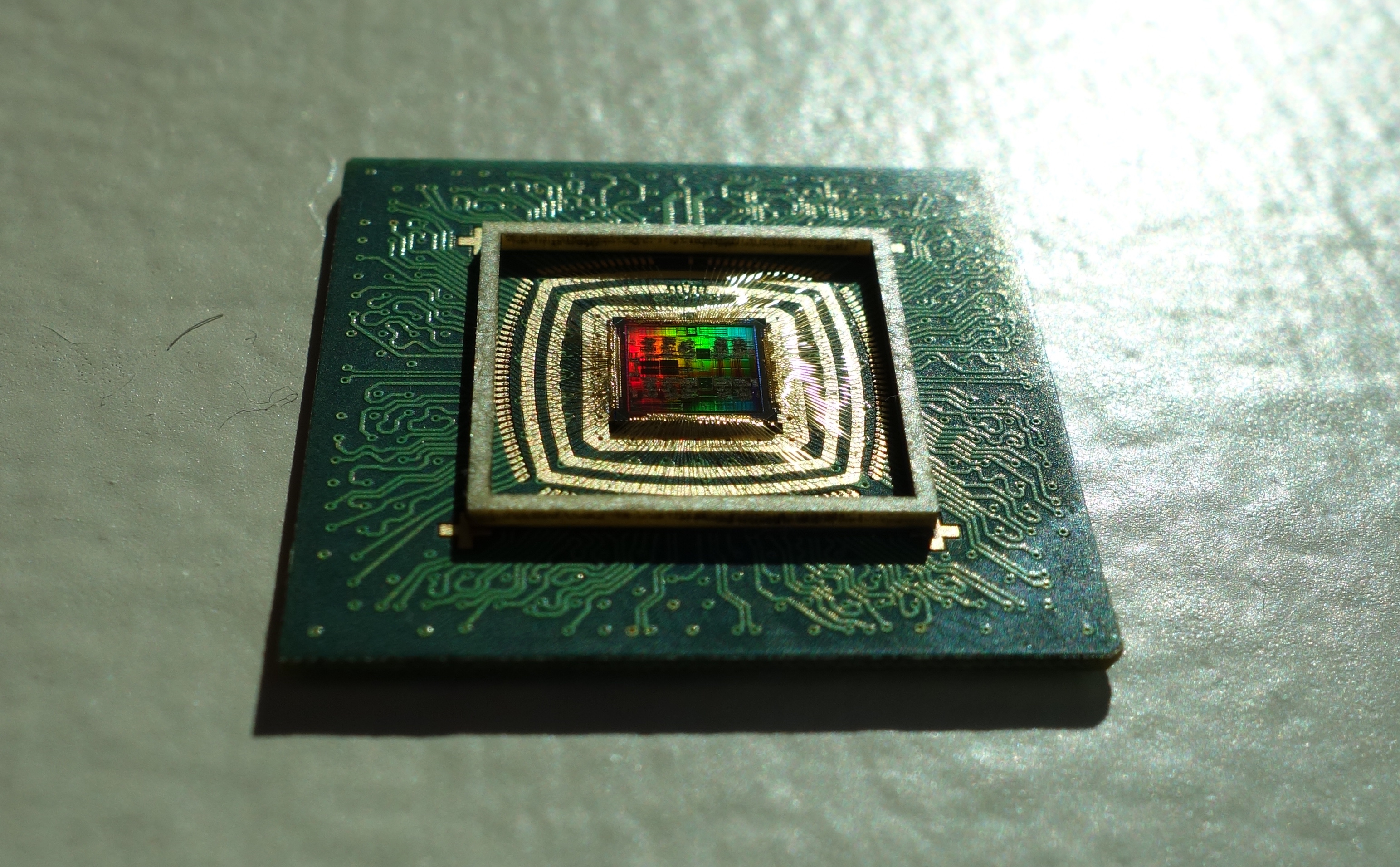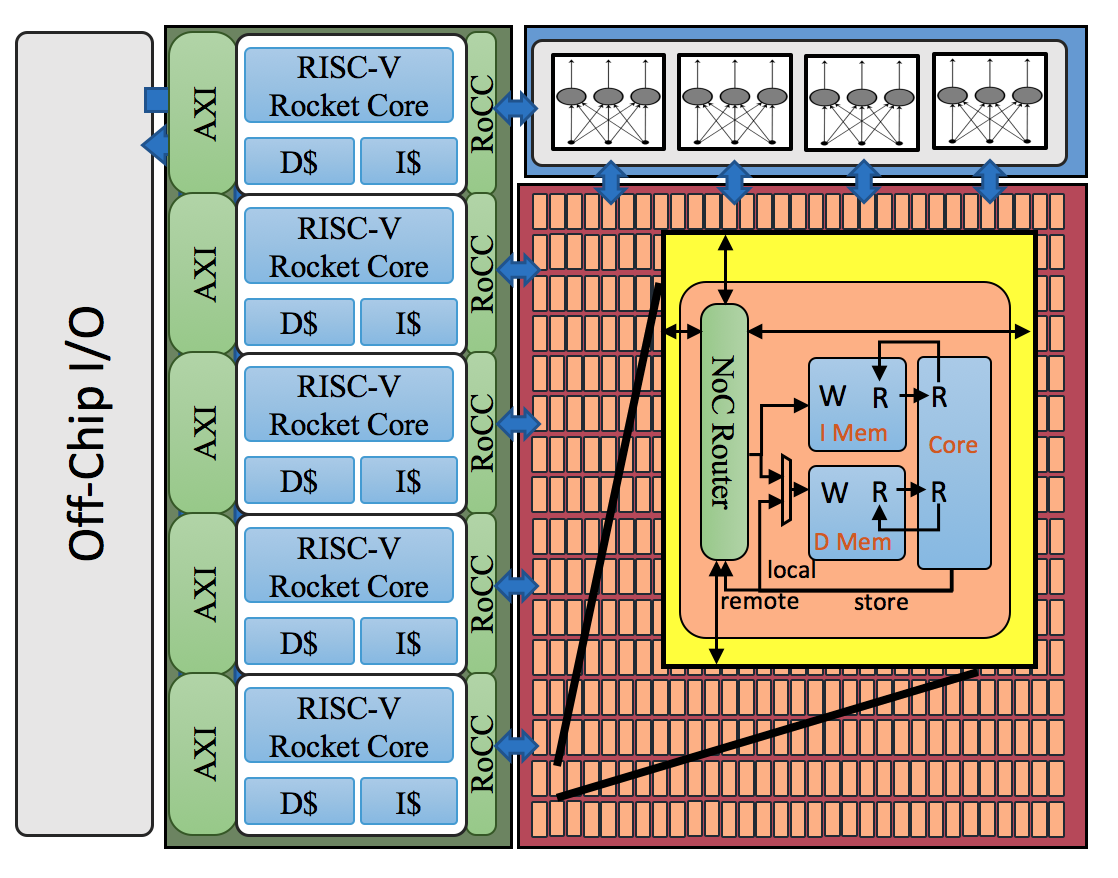|
Key:
| ||||||||||||||||||||||||||||||||||||||




(Click on the pictures for larger view.)
Click here for zoomed-in photos of the chip.
Shmoo plot confirming operation at 280 MHz @ 1.8V and 370 MHz @ 2.4V
Our High-Speed Singled-Ended DDR I/O (using off-the-shelf 3.3V TTL) has been confirmed to work at ~390 MHz with 16mA outputs.
Back to BaseJump mainpage.
 .
. 

